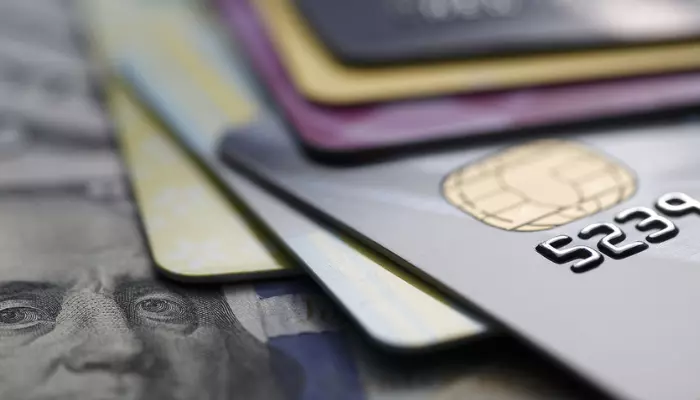
美联储正在努力控制通胀,市场预计其将在6月份会议上加息50个基点,这是自今年3月以来的第三次加息。这将使目标利率处于 1.25% 至 1.5% 范围内。
美联储似乎不会就此止步。美联储利率制定委员会在 5 月份会议期间发布的声明中指出,预计“目标利率继续上调是合理的”。美国银行家协会调查的银行业经济学家预计美联储将在6月后的会议上进一步加息100个基点。这将使政策利率在年底前维持在 2.25% 至 2.5% 的范围内。
美联储行动的影响可能会波及信用卡持有者。您应该为可变卡组的增长做好准备。
美联储的行动旨在应对疫情后出现的通货膨胀。由于疫情期间供应链中断和救援工作,以及乌克兰战争的影响(影响了油价和其他大宗商品)和通胀加剧,美联储现在专注于提高目标利率,以对抗所有这些持续通胀的影响。
疫情支持的后果?
当2020年冠状病毒大流行出现时,美联储开始密切监视局势。央行在 3 月份预定的会议之外进行了两次降息,将目标利率下调 1.5 个百分点至 0%。
随着危机的复苏,如此低的利率应该会刺激消费和商业投资,以维持经济的运转。
美联储还介入购买抵押贷款支持证券和政府债券,这也导致资金注入经济并降低利率。它还采取了额外措施来防止金融市场冻结。
现在,作为所谓量化紧缩政策的一部分,美联储也开始逐步缩减其购买的证券资产负债表。这一举措将从经济中吸走资金,并在货币供应量减少的情况下通过提高利率进一步支持美联储的议程。
摩根大通首席执行官杰米戴蒙似乎担心美联储资产负债表抛售的后果。
由于这些公司是此次危机期间政府债券的最大买家,因此,当美联储出售这些证券时,戴蒙准备应对一些波动。戴蒙面临的另一个问题是乌克兰战争对石油和大宗商品价格的影响。
就业和通胀目标
美联储的行动受到管理经济中的就业和通货膨胀(实现价格稳定)的双重使命指导。他们的目标是最大限度地提高就业率,并长期将通胀率维持在 2% 的水平。
截至5月份,美国经济增加了39万个就业岗位,失业率为3.6%。从积极的一面来看,工资增长速度较四月份有所放缓,这让美联储松了一口气。
早在2020年,作为不对称通胀目标制的一部分,美联储决定,即使通胀在一段时间内高于2%目标,只要通胀低于该2%目标,美联储就不会提高目标利率。几年的水平。
考虑到上次经济衰退的教训(当时尽管就业持续增长,但通货膨胀却没有上升)。美联储似乎要到 2023 年才会开始加息。
美联储官员此前曾认为通胀是“暂时的”且不可持续的。不过,随着通胀连续数月高于7%,5月份达到8.6%,美联储将继续加息。她相信就业市场能够承受她的加息。
1980年,在美联储主席保罗·沃尔克的领导下,通胀率达到11%。考虑到这一点,美联储目前的重点是防止通胀失控。
通胀预期上升
美联储理事克里斯托弗·沃勒(Christopher J. Waller)在最近的评论中表示,他看到长期通胀预期从2%以下上升至略高于2%。 (纽约联邦储备银行的消费者调查显示,4月份未来三年的通胀预期为3.9%,而3月份为3.7%。)沃勒希望美联储在一段时间内将利率降低50%。直到他看到通胀接近美联储的2%目标。
在对就业的影响方面,沃勒表示,空置率如此之高,即使美联储紧缩政策导致空置率下降 2.5 个百分点,上一季度末的空置率仍将保持在健康水平。看到了扩张。 2020年初。
对信用卡利率的影响
对于持卡人来说,所有这些都意味着您可能会看到浮动卡利率的上升。这些价格与最佳可用价格挂钩。基准利率又基于美联储的目标利率。这意味着,当美联储开始加息时,利率也会上升。
如果关键利率上升,浮动利率也会随之上升。事实上,信用卡利率已经上升,6 月初全国平均 APR 为 16.68%,而 3 月份为 16.34%。
这意味着您应该开始更有策略地管理您的信用卡余额。如果您有余额,请计划将其兑现。如果您在一段时间内有余额,您可以将其转为较低利率的选项,例如,如果这对您来说更划算,可以使用个人贷款来偿还信用卡。
最后结果
美联储正在继续结束其在疫情期间为支撑经济而采取的宽松货币政策。市场预计6月份目标利率将上调50个基点,并且今年将继续一系列加息。由于信用卡的浮动利率与基于联邦基金利率的优惠利率挂钩,因此消费者应该为浮动利率的上升做好准备。
